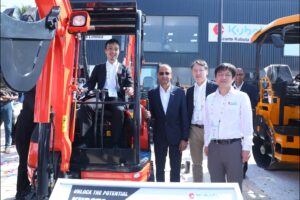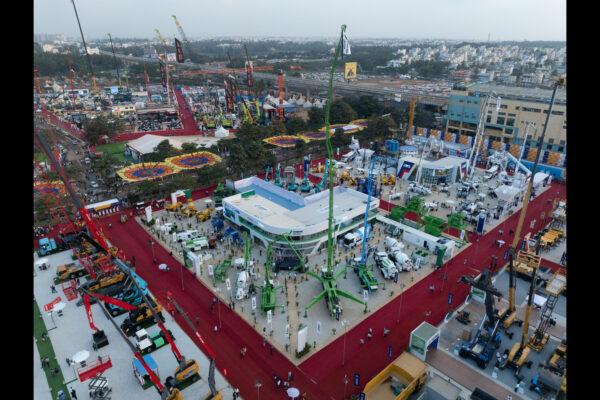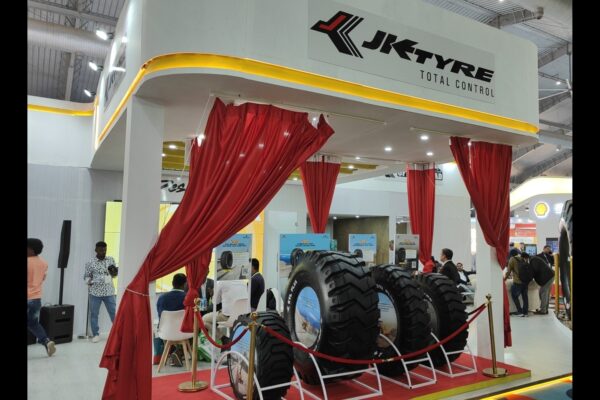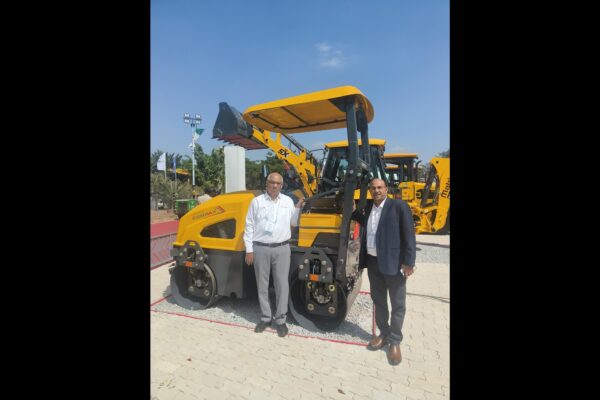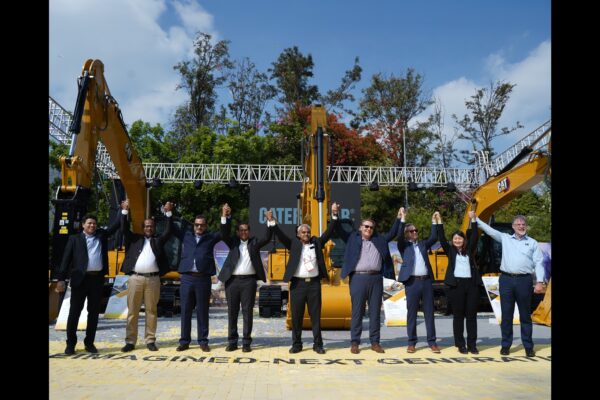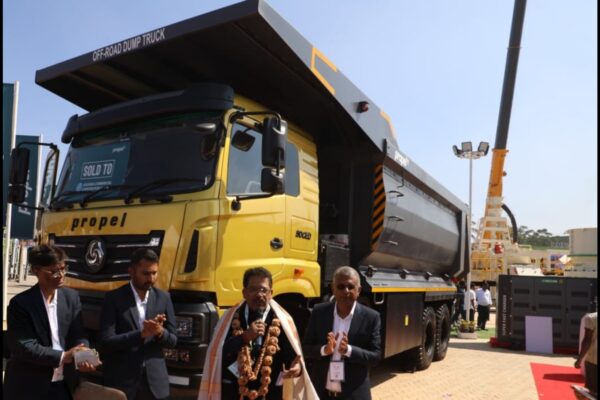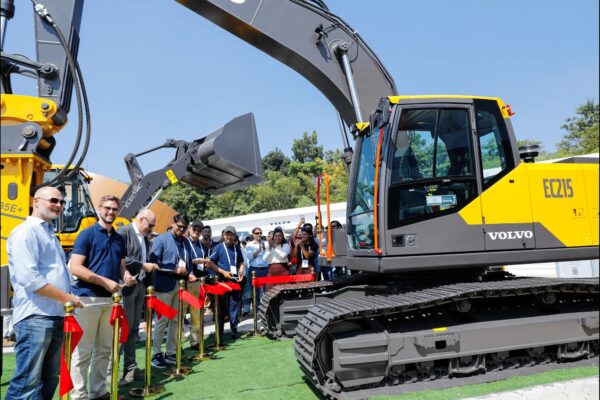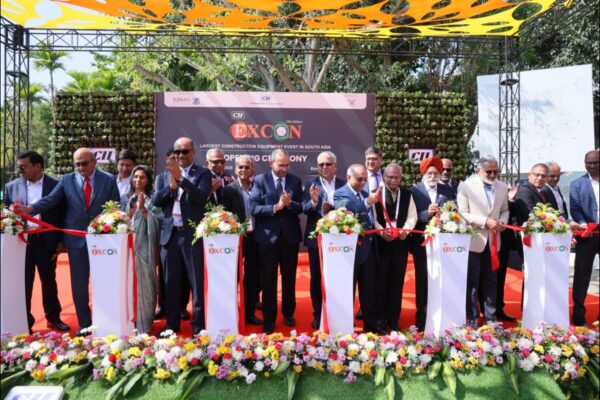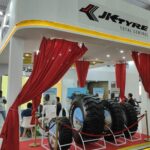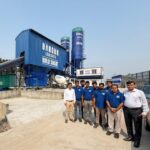Cranes: Accelerating India’s infra push
Behind every towering skyline, expansive metro network, and sprawling renewable energy project is a fleet of cranes and heavy lifting equipment making it all possible. As India accelerates its drive toward a $10 trillion economy, this sector is poised for significant growth. This article highlights the evolving role of cranes and heavy lifting equipment in India’s infrastructure growth. Read on…
India is truly on the move—witness to a construction and infrastructure revolution that is reshaping its urban and industrial landscapes. Drive along any highway and you’ll encounter a nation under transformation: roads being widened, massive flyovers under construction, bridges spanning rivers and ravines, clusters of skyscrapers reaching for the sky, solar farms blanketing barren plains, and wind turbines gently turning in the breeze. Along the coastline, giant refineries and ports are taking shape, symbolizing industrial progress. Behind these engineering marvels lies the often-unseen but critical force of cranes and heavy lifting equipment. Tower cranes dominate city skylines, mobile cranes crisscross sites, and hydraulic lifting machines handle precast components with precision. Unlike in the past when most construction was done piece-by-piece on-site, the modern era emphasizes off-site fabrication and on-site assembly – made possible only through powerful lifting technologies. Cranes are no longer just tools; they are enablers of scale, speed, and structural ambition.
The crane and heavy lifting segment, once a silent partner, is now taking center stage in India’s growth story. As India sets its sights on becoming a $10 trillion economy by the mid-2030s, demand for cranes and heavy lifting equipment is gaining significant momentum. A recent report by Mordor Intelligence pegs the Indian crane market at USD 1.48 billion in 2025, with projections indicating a rise to USD 2.06 billion by 2030 – registering a compound annual growth rate (CAGR) of 6.79%. The report notes that mobile cranes continue to dominate the market, thanks to their versatility and ease of movement, particularly in space-constrained urban projects. Tower cranes are a mainstay in high-rise construction, while crawler cranes are increasingly favoured for heavy lifting in challenging terrain.
Integrating intelligent lifting systems
Today’s cranes and heavy lifting equipment do more than just hoist loads—they lift them with intelligence and precision. Technology is revolutionising the industry, driving improvements in safety, efficiency, and environmental performance. Today’s cranes are far more than just mechanical lifting machines – they are intelligent systems embedded with cutting-edge digital technologies. Telematics and IoT-enabled sensors are becoming standard, offering real-time insights into equipment health, load data, fuel efficiency, and operator behaviour. These systems allow for predictive maintenance, reducing unplanned downtime and enhancing fleet utilisation. Automation is also making inroads. Semi-autonomous cranes, capable of performing repetitive lift tasks with minimal human intervention, are being deployed at complex construction sites, especially in industrial and metro rail projects. In high-rise construction, tower cranes now feature anti-collision systems, load moment indicators (LMI), and zone protection technologies that enhance operational safety in crowded urban sites.
GPS and RFID technologies are being used for precise positioning and material tracking, streamlining logistics in large-scale infrastructure projects. Remote monitoring and diagnostics—accessible through smartphones or cloud platforms—enable fleet managers to make quick, data-driven decisions from anywhere, increasing jobsite responsiveness. Building Information Modelling (BIM) integration is another game-changer, allowing lift planning to be simulated virtually before execution. This minimizes risks, avoids clashes, and optimizes crane placement in congested zones. Some advanced crawler and mobile cranes now even feature automatic rigging and self-levelling capabilities, reducing setup time and human error.
Artificial Intelligence (AI) is beginning to make its mark in the crane and heavy lifting sector, adding a layer of intelligence that goes beyond automation. AI-enabled cranes can analyse real-time data from sensors to optimise lifting paths, predict potential hazards, and make on-the-fly adjustments to ensure safer operations. For instance, AI algorithms can assess wind speed, load weight, boom angle, and terrain conditions to prevent tipping or overloading – without relying solely on operator input. AI is also being used to enhance predictive maintenance by analysing usage patterns and wear-and-tear data to forecast when parts will need servicing or replacement, thereby avoiding sudden breakdowns. Some advanced systems are capable of autonomous or semi-autonomous lifting, where AI assists with alignment, rigging, and motion control, particularly useful in repetitive or high-risk tasks. Additionally, when integrated with computer vision, AI can support object recognition and obstacle detection, adding another layer of operational safety, especially in crowded urban job sites or complex industrial environments. Though still in its early stages in India, the adoption of AI in cranes is expected to grow as construction sites increasingly embrace digital transformation and demand faster, safer, and more intelligent operations.
Securing every lift
Safety remains a non-negotiable priority in the crane and heavy lifting industry, especially as construction projects grow in scale, height, and complexity. Whether it’s a high-rise building in a crowded city, a refinery under expansion, or a bridge over a flowing river, one mistake in lifting operations can lead to costly—and sometimes fatal—consequences. To counter this, manufacturers and contractors are placing increased emphasis on technology-led safety measures and operator-focused practices. Today’s cranes are equipped with advanced safety systems such as Load Moment Indicators (LMI), anti-sway mechanisms, anti-collision sensors, and real-time stability controls. These features monitor critical parameters like load weight, wind speed, and boom angles to prevent tipping or structural failure. Automated emergency stop systems and operational interlocks further ensure that safety isn’t left to chance.
Operator safety has emerged as a key focus area. Enclosed, climate-controlled cabins with ergonomic seating and advanced control consoles are now standard in many premium crane models, reducing operator fatigue during long shifts. High-resolution displays, joystick precision controls, and panoramic visibility enhance situational awareness. Wearable safety devices and biometric logins are also being used to restrict unauthorised access and ensure only certified operators handle the equipment. AI-powered systems can provide real-time alerts and even intervene to prevent unsafe manoeuvres, while virtual and augmented reality (VR/AR) tools are being used to train operators in life-like simulations – preparing them for high-pressure scenarios without real-world risk. Compliance with global safety standards such as ISO, EN, and OSHA is gaining ground in India, with regular site audits, digital safety checklists, and remote diagnostics becoming part of daily operations.
Embracing Green
The crane and heavy lifting sector, traditionally associated with diesel-powered machines and high emissions, is now undergoing a green transformation. Manufacturers and contractors alike are investing in technologies and practices that reduce carbon footprints, lower noise pollution, and promote resource efficiency on site. One of the most visible trends is the rise of electric and hybrid-powered cranes, particularly in urban, indoor, and noise-sensitive zones. These cranes offer significant environmental advantages—reduced fuel consumption, near-zero emissions, and quieter operation—without compromising on lifting performance. In addition to electrification, OEMs are using low-emission engines, bio-hydraulic oils, and regenerative braking systems to make conventional cranes more eco-friendly. Some advanced models are equipped with energy recovery technology that harnesses excess energy during downward movements, further improving fuel efficiency.
Digital tools are also supporting sustainable operations. Telematics and fleet management systems help reduce idling time, optimise fuel usage, and track carbon emissions – allowing project managers to make data-driven decisions that align with ESG goals. Remote diagnostics reduce unnecessary site visits and maintenance-related emissions. Moreover, the growing use of precast and modular construction, which often involves heavy lifting of large components, reduces waste and shortens construction timelines, indirectly supporting environmental sustainability. Cranes that are designed to operate efficiently in these settings are playing a vital role in this shift. As India moves toward a greener economy, cranes and lifting equipment are evolving from fuel-hungry machines to clean, efficient, and eco-conscious tools – helping build not just infrastructure, but a more sustainable future.
Hoisting progress amid headwinds
While the crane and heavy lifting equipment market in India is witnessing strong growth, the industry faces a host of challenges. One of the key challenges is the lack of skilled operators and technicians. As cranes become more advanced—with digital interfaces, telematics, and AI-based controls—the industry is struggling to keep up with the demand for trained personnel who can operate and maintain these machines efficiently. Many training institutes still focus on outdated systems, creating a gap between machine capability and on-ground execution. Another significant issue is cost pressure. With raw material prices, particularly steel, remaining volatile, the cost of manufacturing cranes has increased. For buyers, especially small and mid-sized contractors, the high capital investment in advanced lifting equipment remains a barrier, pushing them to opt for rentals or older, less efficient machines. Regulatory hurdles and project delays are also persistent issues. Unclear norms around equipment certification, overloading penalties, and interstate movement of large cranes often result in logistical bottlenecks and increased downtime.
Additionally, while the shift to electric and hybrid cranes is welcome, the lack of charging infrastructure, higher upfront costs, and limited product availability in India are slowing down widespread adoption. Financing options for new, sustainable equipment are also limited, especially for smaller firms. Finally, the unorganised rental market poses both operational and safety concerns. The absence of standardised inspection, certification, and tracking of rental fleets increases the risk of breakdowns and accidents on site.
Driving growth
Government policy has emerged as a powerful catalyst in driving the growth of the crane and heavy lifting equipment sector in India. Massive public infrastructure investments under schemes like the PM Gati Shakti National Master Plan, Bharatmala, Sagarmala, and the National Infrastructure Pipeline (NIP) are generating unprecedented demand for lifting solutions across transport, logistics, energy, and urban development sectors. The ‘Make in India’ initiative has also encouraged both domestic manufacturing and the localisation of global OEMs, resulting in a more competitive market and improved access to advanced technology. With construction timelines shrinking and project complexity increasing, developers are increasingly relying on cranes and lifting equipment to execute modular, prefabricated, and high-rise construction faster and more efficiently.
Sectors such as real estate, urban infrastructure, renewable energy, metro rail, ports, and heavy industries are acting as major demand drivers. For instance, the growing push for solar and wind energy installations across India’s hinterlands requires specialised lifting equipment like telescopic and crawler cranes to deploy large turbines and panels. Similarly, metro and high-speed rail projects demand high-capacity cranes for segment launching, girder lifting, and tunnel boring machine handling. Policy-level emphasis on ease of doing business, digitisation of approval systems, and public-private partnerships (PPPs) in infrastructure are further improving project execution speed—indirectly boosting demand for efficient lifting solutions. Additionally, the push for smart cities, affordable housing, and industrial corridors is expected to sustain equipment demand in the medium to long term.
Demand takes a lift
As India accelerates towards its $10 trillion economic vision, the crane and heavy lifting equipment industry is poised to play a pivotal role in building the nation’s next-generation infrastructure. With technological innovations, digital transformation, and sustainability shaping the future of lifting operations, the sector is undergoing a quiet but powerful evolution. While challenges such as skill shortages, regulatory gaps, and cost pressures remain, the combined momentum of government policy, private investment, and rapid urbanisation is creating fertile ground for long-term growth. As demand surges across sectors – from metro rails and smart cities to renewable energy and logistics – cranes are no longer just tools of construction; they are becoming strategic assets that define the speed, safety, and sophistication of project execution.
“India’s continued thrust on infrastructure development places cranes – whether towering over city skylines or rolling across remote industrial zones – at the heart of this transformation, lifting not just heavy loads, but the very foundation of the nation’s progress.
Tags


